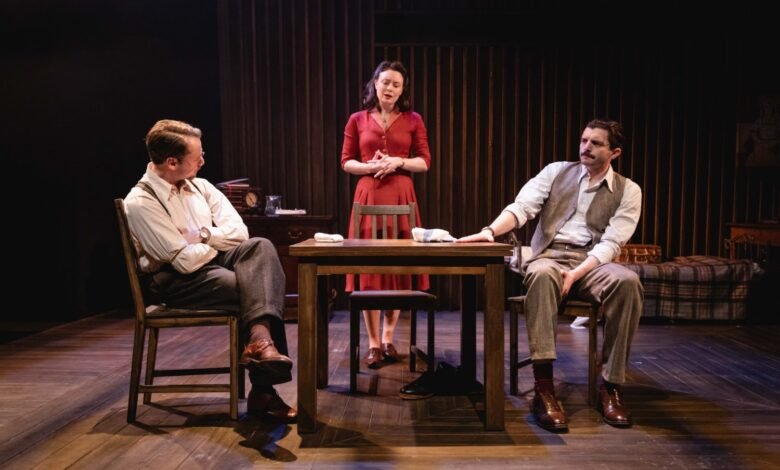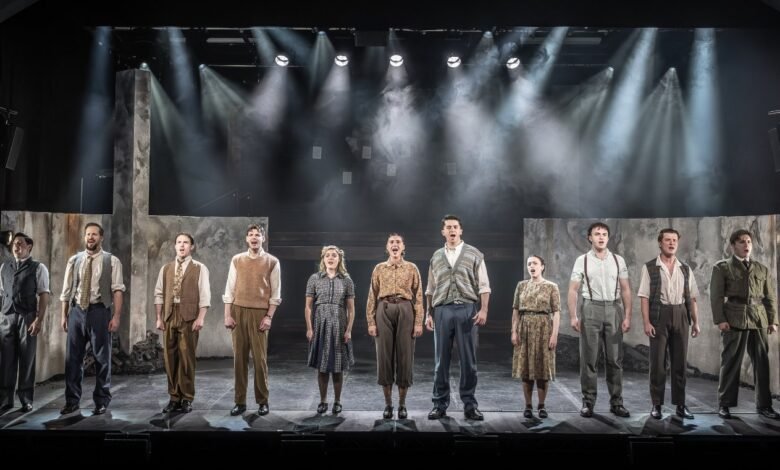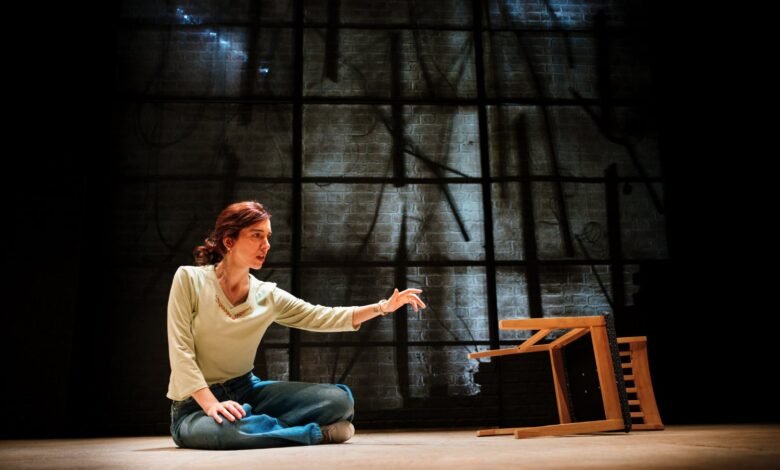CULTURE
-

Exploring the Channel Islands’ complex wartime history — Jewish Renaissance
Take a look back at our tour to Jersey, Guernsey and Alderney, which marked 80 years since the end of World War II Last week, JR Tours set off on a trip to the Channel Islands to mark the end of World War II. Eighty years ago, on 8 May, Germany acquiesced and signed the German Instrument of Surrender, a…
Read More » -

Here We Are ★★★★ — Jewish Renaissance
Stephen Sondheim bids a dreamlike farewell in this colourful posthumous musical Are the couple sweeping the stage part of the show or management making sure it’s spic and span for performance, I wonder. So convincingly diligent yet laid back were the pair that it took me time to realise they were Tracie Bennett and Denis O’Hare, designated in the programme…
Read More » -

Faygele ★★★★ — Jewish Renaissance
Playwright Shimmy Braun’s bold title, Faygele, provides apt explanation of the young protagonist’s plight and motivation. Translated from Yiddish, ‘faygele’ is actually ‘little bird’, but it has become a contemptuous term of insult for a gay man, someone whose life chances can be compromised, especially in the Orthodox Jewish community (Brooklyn in this case) as Braun reveals from personal experience.…
Read More » -

JR debuts a play in Guernsey about the Nazi deportations from the island — Jewish Renaissance
Theresa has previously toured the UK, France and Germany, and it even aired on BBC Radio under the title The Road to Paradise. The play is based on the true story of Viennese Jew Theresa Steiner, who was handed over to the Nazis by the British authorities on the island of Guernsey in 1942. Along with other Jewish women living…
Read More » -

Dracula: A Comedy of Terrors ★★★★
Bad puns, fab comedy! Or it is in the case of this Broadway hit making its British debut I’ve always loved small-cast shows with everyone getting to switch roles. It’s a dead cert for comedy. So here, just five actors get to rotate characters, chameleon-like. And if I reveal that Sebastien Torkia plays not just hero(ine) and vampire prey Mina…
Read More » -

Farewell Mister Haffmann ★★★★★ — Jewish Renaissance
A drama that keeps you on the edge of your seat and not just because there are Nazis invited to dinner French playwright Jean-Philippe Daguerre’s multi-award-winning World War II drama has it all: tension, laughter and an unexpected central dilemma. Now, for the first time in London, the English language version by Jeremy Sams is playing at Park Theatre. The…
Read More » -

Lili Ország: Wanderings / Bolyongások
An impressive retrospective of the Hungarian modernist artist in suitably stunning surrounds Lili Ország (1926-1978) was a highly intellectual modernist painter, whose primary interests were religion, faith and spiritual revelation. It’s fitting then that Wanderings / Bolyongások takes place in a deconsecrated Baroque church that’s part of the Kiscelli Museum in Budapest; fulfilling a lifelong dream that the Hungarian artist…
Read More » -

Alex Waldmann — Jewish Renaissance
As he takes on the title role in Farewell Mister Haffmann, a wartime drama set in Nazi-occupied Paris, Alex Waldmann tells us how it feels to lead the popular French play Though lesser-known here, Farewell Mister Haffmann is one of France’s most successful, longest running plays. It’s won four Molière Awards and was made into a gripping, suspenseful film in…
Read More » -

The Musical ★★★ — Jewish Renaissance
I originally saw the play on which this musical is based in 2022 at the Brundibár Arts Festival in Newcastle, which was both memorable and rousing. Why then did this production not have quite the same effect? Will Nunziata’s direction alongside the music and book (composer Natalie Brice, book and lyrics Brian Belding) didn’t ignite excitement, despite strong support from…
Read More » -

A Knock on the Roof ★★★★
A vivid and vital account of the experience of a young Palestinian woman and her family in the recurring dangers and violence in Gaza – both now and in recent years As the audience sits in the packed auditorium waiting for the house lights to dim, we become aware of the smiling presence of a young woman alone on a…
Read More »
